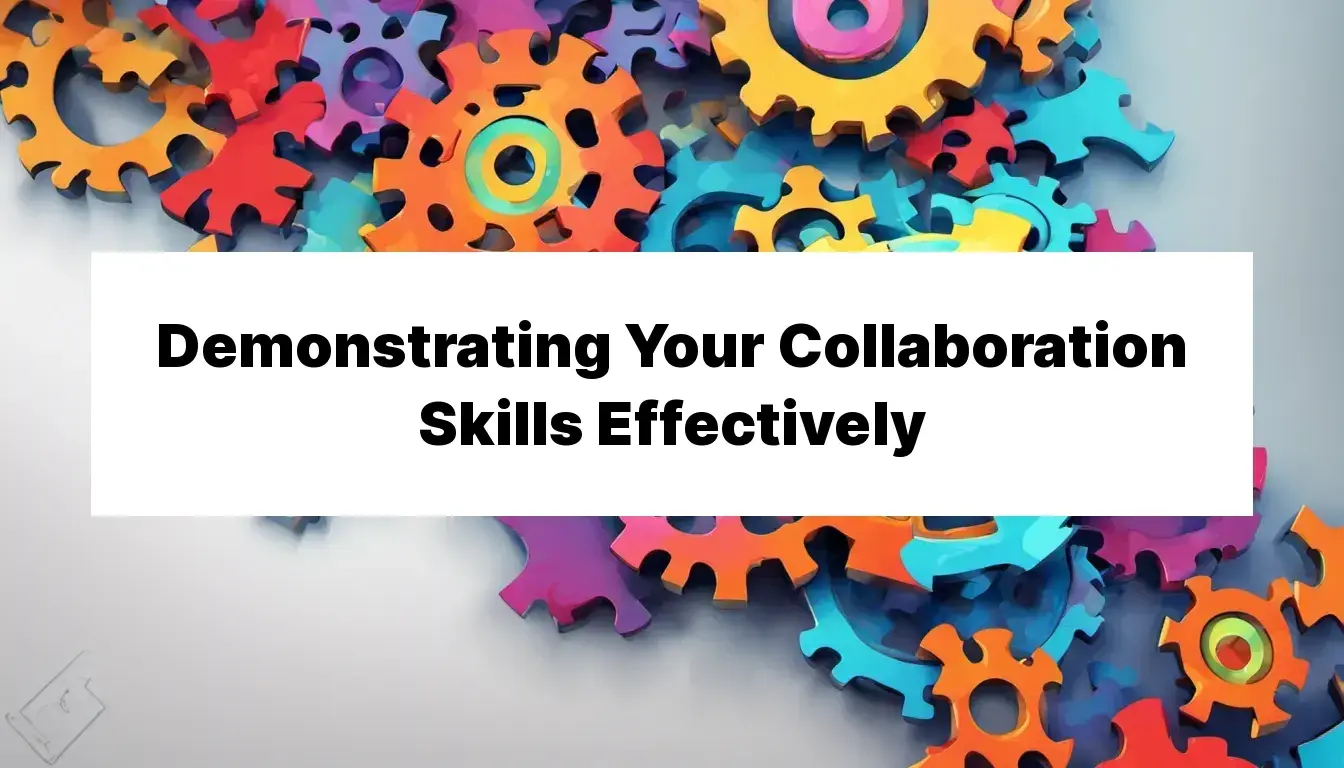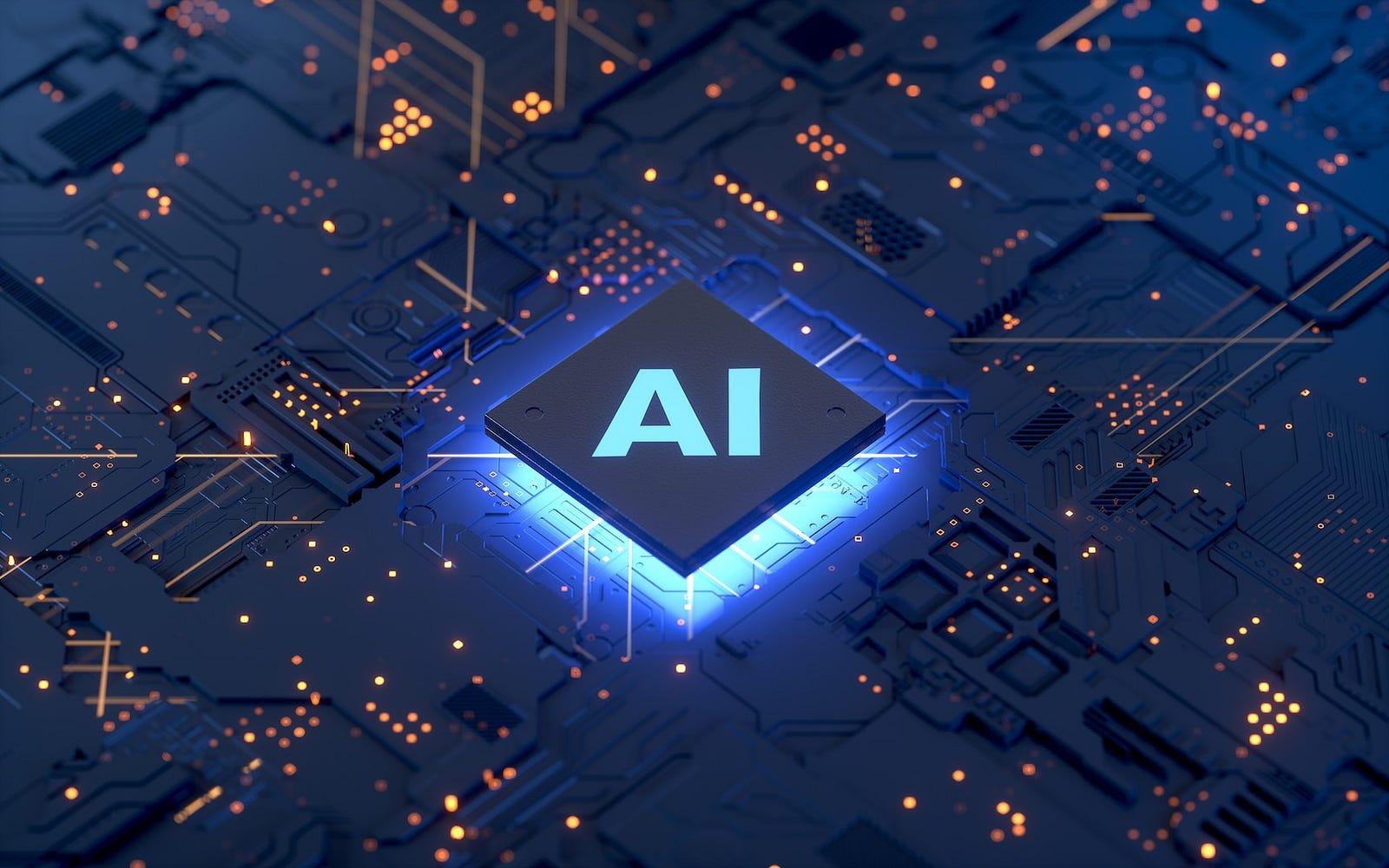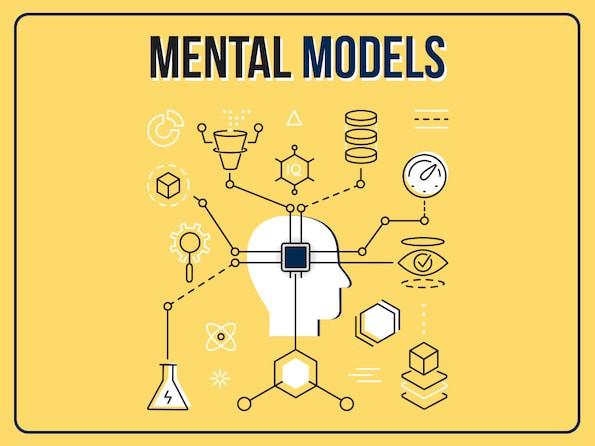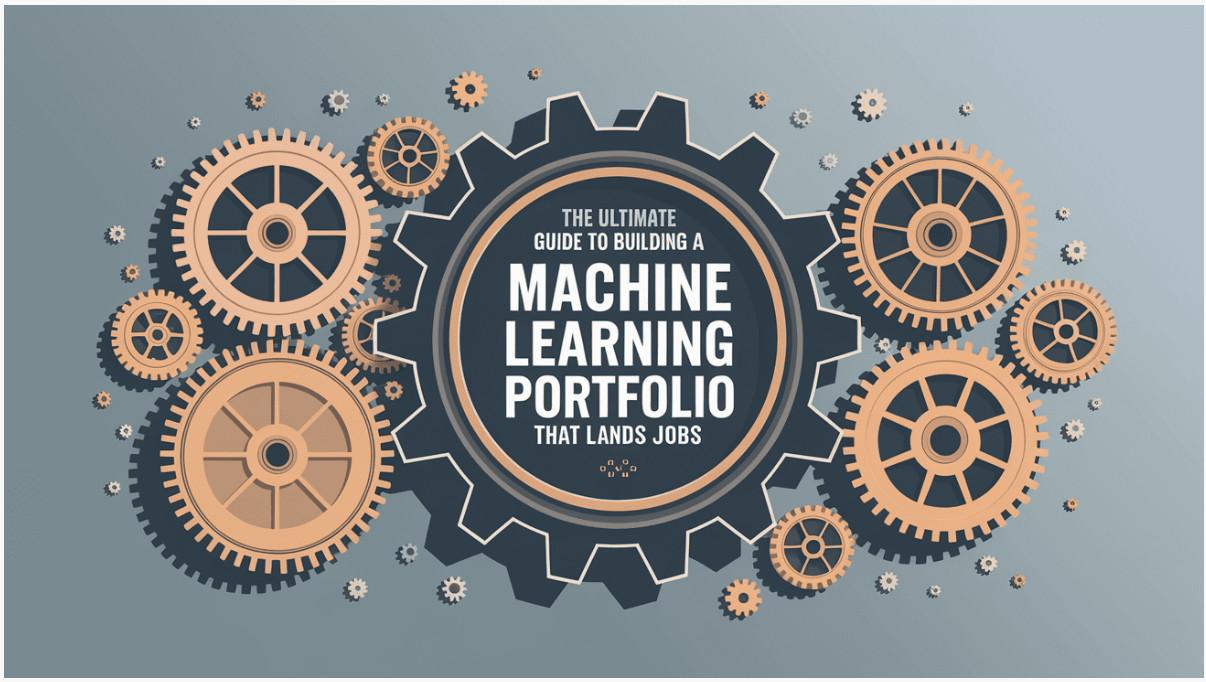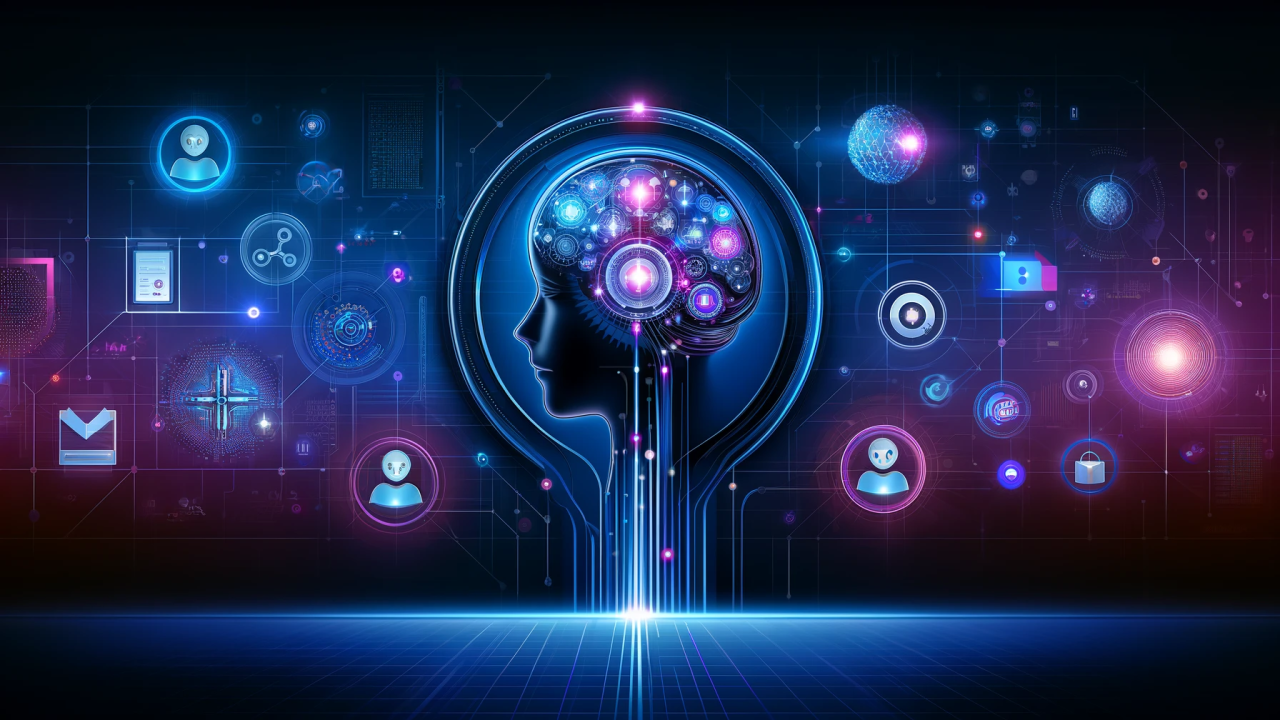Section 1: Introduction - The Overlooked Skill That Decides Technical Success
When preparing for machine learning interviews, most engineers pour their energy into algorithms, model optimization, and deployment design. They study cross-validation, re-learn data structures, and polish their model trade-off explanations.
Yet, when the actual interview arrives, many fail, not because of weak technical knowledge, but because of something softer, subtler, and often ignored: collaboration.
In 2025, hiring managers and interviewers at top ML employers like Google, OpenAI, and NVIDIA have made one discovery very clear, great ML engineers aren’t just builders of systems; they’re builders of alignment.
Every ML project, whether it’s recommendation ranking or model retraining automation, demands teamwork. You need to interpret ambiguous requirements from a PM, negotiate dataset constraints with a data engineer, and coordinate with MLOps to monitor live models.
The technical quality of your work depends on the clarity of those conversations.
That’s why interviewers today watch how you communicate as closely as what you code.
For instance, imagine you’re in a system design interview. The interviewer says,
“Design an ML pipeline to detect fraudulent transactions.”
Two candidates respond differently.
Candidate A dives right in: “We’ll use an XGBoost classifier over aggregated user behavior features…”
Candidate B pauses and says, “Before I dive in, can I clarify whether the system needs to flag fraud in real time or can operate in batch mode? That’ll shape both data strategy and model choice.”
Who do you think seems easier to work with?
Candidate B, because they’re thinking collaboratively.
Collaboration isn’t about being agreeable or chatty. It’s about co-creating clarity, inviting input, and turning complex technical conversations into shared reasoning. It’s the skill that transforms interviews from a test into a dialogue, and interviewers never forget candidates who make that shift.
In this blog, we’ll explore:
- How interviewers quietly measure collaboration in every ML round
- The signals that differentiate strong collaborators from lone performers
- How to practice and demonstrate teamwork, even in individual assignments
- And why, in modern ML teams, collaboration has become a core technical skill
Check out Interview Node’s guide “The Hidden Metrics: How Interviewers Evaluate ML Thinking, Not Just Code”
Section 2: Why Collaboration Is Now a Core ML Interview Skill
There was a time when being the smartest person in the room was enough to ace a machine learning interview.
You could walk into a whiteboard session, derive gradient equations flawlessly, and walk out with an offer.
That era is over.
As ML systems have matured from prototypes to billion-dollar production pipelines, the definition of “top ML talent” has evolved.
Today, companies don’t just need engineers who can build models, they need engineers who can align multiple systems, multiple people, and multiple goals simultaneously.
That alignment depends on collaboration.
From Solo Coders to Cross-Functional Engineers
Modern ML work is inherently interdisciplinary.
If you’re developing a model for ad ranking, you’re not just writing Python scripts, you’re coordinating with:
- Data engineers, to ensure pipeline integrity and schema consistency,
- Infra teams, to handle scalable model deployment,
- Product managers, to define acceptable latency or CTR trade-offs, and
- Data scientists, to interpret model outputs and validate hypotheses.
Every step in that chain requires communication, negotiation, and trust.
If you can’t convey your reasoning clearly or invite others into your process, your model may technically work, but the system won’t.
That’s why interviewers are now asking themselves a deeper question during every round:
“Can this person think beyond their terminal window?”
When you speak collaboratively, by clarifying trade-offs, summarizing alignment, or checking context, you’re signaling that you understand the ecosystem of ML work, not just the code behind it.
Check out Interview Node’s guide “Beyond the Model: How to Talk About Business Impact in ML Interviews”
Collaboration as a Predictor of Real-World Success
At Google, interviewers often reference something called “team scalability.”
It’s the measure of how much a single engineer improves or complicates collaboration dynamics in a team.
A brilliant solo contributor who can’t coordinate becomes a bottleneck, but a strong collaborator multiplies everyone’s output.
This is why FAANG interview loops now include multiple touchpoints for assessing collaboration, even in technical rounds:
- Pair coding tests how you communicate under pressure.
- System design assesses whether you ask clarifying questions.
- Behavioral interviews explore how you align conflicting goals.
The candidate who frames problems as shared challenges, not personal puzzles, almost always scores higher.
It’s no coincidence that many of the highest-rated engineers on performance reviews are also the most collaborative ones. They bridge gaps faster, reduce friction in handoffs, and make teammates feel smarter and heard.
That’s precisely what interviewers are trying to detect, who will make the team more effective just by being on it.
The Subtle Shift: From Individual Brilliance to Shared Momentum
Collaboration in ML isn’t about endless meetings or groupthink.
It’s about translating technical clarity into collective progress.
It’s about noticing when your teammate is stuck, helping them debug a data issue, or explaining your model constraints in product-friendly language.
In interviews, you can reflect this shift by demonstrating:
- Curiosity: “Would you like me to optimize for inference speed or explainability?”
- Empathy: “If we had multiple data sources with different refresh rates, I’d sync with the data team before feature selection.”
- Adaptability: “That’s a fair trade-off, maybe we can balance it by using a lightweight ensemble.”
Every sentence like that signals maturity, self-awareness, and partnership, qualities far rarer (and more valuable) than textbook ML expertise.
Key Takeaway
The ML industry is entering an era where technical skill is table stakes, but collaboration is the real differentiator.
It’s not enough to know how models work, you must also know how people work around models.
That’s why your next ML interview isn’t just evaluating your code, it’s evaluating your compatibility with collaboration itself.
Section 3: How Interviewers Evaluate Collaboration in ML Interviews
When you walk into an ML interview, you might think the interviewer is purely focused on your problem-solving skills, your ability to debug a model, reason through system design, or write clean Python.
But in reality, they’re quietly tracking something else too: how you communicate, adapt, and collaborate while solving those problems.
Collaboration isn’t a separate round anymore, it’s a meta-skill woven across every stage of the interview process.
The Collaboration Signals Interviewers Are Trained to Look For
Interviewers, especially at companies like Google, Amazon, and OpenAI, are increasingly trained to identify behavioral signals within technical discussions.
They use structured rubrics to assess not only your technical accuracy, but also how you engage when things get uncertain or ambiguous.
Here’s what they’re actually observing:
| Collaboration Signal | What Interviewers Are Watching | What Strong Candidates Do |
| Clarity | Do you communicate your thought process clearly and logically? | You verbalize reasoning, share assumptions, and summarize progress. |
| Adaptability | How do you respond when challenged or corrected? | You acknowledge feedback gracefully and adjust. |
| Curiosity | Do you ask clarifying questions early? | You ensure mutual understanding before diving in. |
| Empathy | Can you explain technical trade-offs in plain language? | You adapt communication to the interviewer’s context. |
| Engagement | Do you treat the session as collaborative? | You use phrases like “Would you like me to…” or “Let’s explore…” instead of “I’ll just do this.” |
These signals collectively form a recruiter’s collaboration profile, an internal impression of how you’d function in a team.
It’s not about being extroverted; it’s about being inclusive in your reasoning.
How This Plays Out in Real Interviews
Let’s take two examples of how collaboration manifests differently between candidates.
Scenario 1: A System Design Round at Google
The interviewer says:
“Design an ML system to predict customer churn.”
Candidate A starts sketching model architectures immediately:
“We’ll need a binary classifier with feature engineering from user retention logs…”
Candidate B takes a step back:
“Before jumping into architecture, should we assume real-time predictions or batch scoring? That affects our pipeline design.”
The difference? Candidate B is collaborating, not performing.
They’re co-defining the problem.
Interviewers interpret that as confidence, awareness, and maturity, the traits of someone who can scale in complex teams.
The Importance of Micro-Collaboration Moments
Every ML interview includes small, fleeting moments that reveal your collaboration instincts.
For example:
- When you say, “Let me confirm the constraints first,” you show alignment.
- When you pause to summarize your design before implementation, you show clarity.
- When you ask, “Would it be fair to assume X?” you show adaptability.
These micro-collaboration gestures often carry more weight than perfect answers.
Interviewers know real-world ML work is full of messy data, unclear ownership, and shifting priorities, and they’re asking, “Can this person stay cooperative when everything gets complex?”
That’s why they’ll often gently interrupt or introduce constraints mid-discussion.
They’re not trying to trip you up, they’re testing your reaction under collaboration pressure.
“I don’t want to see if you’re always right. I want to see how you react when you might be wrong.”
— Senior ML Interviewer, Amazon
Collaboration in Behavioral Rounds
By the time you reach the behavioral or “culture fit” stage, collaboration becomes explicit.
Questions like:
- “Tell me about a time you disagreed with a teammate.”
- “How did you align technical trade-offs with business goals?”
are not warm-up questions.
They’re diagnostic.
Your answers reveal self-awareness, whether you can own conflict, credit others, and navigate ambiguity without ego.
Check out Interview Node’s guide “Behavioral ML Interviews: How to Showcase Impact Beyond Just Code”
Key Takeaway
Collaboration isn’t a personality trait, it’s a professional signal.
Interviewers use it to predict whether you’ll make others better, faster, and more aligned once you’re on the team.
So when you step into your next ML interview, remember:
You’re not just coding for yourself, you’re communicating for everyone you’ll eventually work with.
That’s the signal they’re watching.
Section 4: How to Demonstrate Collaboration in Technical Problem-Solving Rounds
Collaboration isn’t something you just “talk about” during behavioral interviews, it’s something you demonstrate throughout every technical round, especially when you’re solving a problem in real time.
Most ML interviews, whether coding, data analysis, or system design, are not just testing your correctness.
They’re assessing how you think in public, how you respond to input, and how you create clarity for others.
The interviewer isn’t only asking, “Can they solve it?”
They’re also asking, “Would I want to debug with this person on a Friday afternoon?”
a. Turn Your Reasoning Into a Shared Space
The easiest way to demonstrate collaboration is to make your reasoning transparent.
Instead of silently building toward a solution and unveiling it at the end, narrate your thinking step-by-step.
For example, instead of:
“I’ll just implement a hash map here.”
Try:
“We could use a hash map here to store feature lookups, that should give us constant-time retrieval. Does that align with how your team handles similar lookups?”
That small, inclusive phrase, “Does that align with how your team handles…”, instantly shifts the tone from test to teamwork.
You’re showing that you respect context, not just correctness.
b. Collaborate Through Clarification
Great collaborators don’t rush to code, they first clarify what they’re solving.
Asking well-structured questions is one of the strongest signals of collaboration.
It tells interviewers that you don’t assume, you align.
Examples:
- “Just to clarify, are we optimizing for model latency or accuracy?”
- “Is data streaming or batch processed in this setup?”
- “Would this pipeline sit inside a pre-existing infrastructure, or do we need to build from scratch?”
Each question demonstrates situational awareness, you’re thinking like a teammate, not a test-taker.
In fact, Google interviewers often note “collaborative clarifiers” as top candidates because they mirror how real cross-functional teams operate, they don’t assume requirements; they confirm them.
“We’d rather hire someone who asks the right three questions than someone who writes the wrong 300 lines of code.”
— Senior ML Engineer, Google
c. Be Flexible When Interviewers Redirect
Sometimes interviewers deliberately introduce friction or change direction mid-round to observe how you adapt.
It’s not sabotage, it’s collaboration under pressure.
Example:
Interviewer: “Let’s say your feature store becomes inconsistent across regions, what would you do?”
Candidate A: “That wouldn’t happen if my design were followed.”
Candidate B: “That’s interesting, I’d probably first sync with the data team to identify which pipeline caused drift. Depending on scale, I might also add checksums before retraining. Does that sound consistent with your current monitoring setup?”
Candidate B passes with ease. They demonstrate ownership and curiosity, the two cornerstones of collaboration.
They’re not defensive; they’re cooperative under constraint.
d. Use “We” to Frame Shared Thinking
Subtle language choices have powerful psychological effects.
When you replace “I” with “we” strategically, you change the energy in the interview.
Instead of:
“I would train a random forest and tune it.”
Say:
“We could start with a random forest as a baseline and iterate toward a gradient boosting model once we validate overfitting risk.”
The “we” is not just grammar, it’s collaboration.
It positions you as someone who naturally includes others in problem-solving.
Interviewers often subconsciously mirror your tone, when you make it conversational, they lean in.
e. Collaborate When You Don’t Know the Answer
Ironically, one of the strongest ways to show collaboration is to admit when you’re uncertain, and invite joint reasoning.
Example:
“That’s a good question, I haven’t encountered that edge case directly, but my first instinct would be to benchmark a few approaches. How does your team typically validate model drift?”
You’ve turned a moment of weakness into a moment of teamwork.
The interviewer now sees you not as unprepared, but as someone who learns in real time, a valuable team trait.
Remember, collaboration is curiosity under uncertainty.
f. End Every Solution with a Summary
When you wrap up your solution, summarize it clearly and check alignment:
“So to summarize, we’d clean incoming data using Spark jobs, perform feature aggregation, and deploy via Vertex AI with retraining every week. Would that meet your team’s latency expectations?”
That final question is a collaboration checkpoint.
It demonstrates structure, empathy, and shared accountability, the exact skills hiring managers want in production-level ML engineers.
Check out Interview Node’s guide “The Forgotten Round: How to Ace the Recruiter Screen in ML Interviews”
Key Takeaway
Collaboration in technical rounds is about thinking with people, not in front of them.
It’s how you ask, respond, summarize, and include.
You don’t need to dominate discussions or overtalk, you just need to make your interviewer feel like they’re solving with you, not watching you.
That’s what leaves a lasting impression.
Because in real teams, and in real interviews, clarity and connection always outperform code alone.
Section 5: How to Demonstrate Collaboration in Behavioral & Team-Fit Rounds
Behavioral interviews are where collaboration becomes explicitly visible.
By this stage, your technical competence is assumed, what interviewers now want to know is whether you can lead, align, and collaborate under ambiguity.
Most engineers underestimate these rounds. They treat them like casual conversations, when in reality, behavioral interviews often determine the final hiring decision.
Why? Because they reveal how you function when things get messy, when data is missing, teams disagree, and priorities shift.
That’s when real collaboration starts.
a. Why Behavioral Collaboration Matters in ML Teams
Machine learning is one of the most cross-functional disciplines in modern tech.
Every ML decision, from labeling to deployment, involves negotiation across teams with different goals.
- The PM wants faster iteration cycles.
- The data team wants stable schemas.
- The infra team wants consistent uptime.
- The leadership team wants measurable ROI.
If you can’t communicate across those priorities, your technical brilliance won’t matter.
That’s why ML hiring panels evaluate collaboration through storytelling and reflection, not just outcomes.
Check out Interview Node’s guide “Behavioral ML Interviews: How to Showcase Impact Beyond Just Code”
b. How Interviewers Phrase Collaboration Questions
Here are some common collaboration-focused questions in FAANG-level interviews:
- “Tell me about a time you disagreed with a teammate.”
- “Describe a project where you had to influence without authority.”
- “How did you handle a situation when your model didn’t align with business expectations?”
- “Give me an example of how you resolved a technical conflict.”
- “Tell me about a time you helped unblock your team.”
Each question is a window into your conflict resolution, empathy, and adaptability.
Interviewers aren’t judging whether you were right, they’re judging whether you were effective.
c. The STAR Framework for Collaboration Stories
Use the STAR framework to structure your response:
- Situation: What was happening? (Set the scene.)
- Task: What role or responsibility did you have?
- Action: What collaborative actions did you take?
- Result: What measurable outcome did those actions produce?
Here’s how to apply this in a collaboration context:
Situation: “Our model performance dropped due to inconsistent data between dev and prod environments.”
Task: “As the ML engineer responsible for deployment, I had to coordinate between data engineering and infra teams to find the root cause.”
Action: “Instead of assigning blame, I facilitated a debugging session where each team shared logs and metrics. We introduced data validation scripts and weekly cross-team syncs.”
Result: “Reduced deployment errors by 40% and improved retraining stability.”
This example hits all the right notes, technical, structured, and most importantly, collaborative.
d. The Golden Rule: Balance Ownership and Empathy
Strong collaborators own problems without owning all the credit.
You might say:
“I took the lead on aligning the retraining cadence with infra capacity, but credit goes to the data team for improving schema consistency.”
This signals humility and awareness, traits that hiring committees deeply respect.
Remember: behavioral interviewers are usually cross-functional, a data science manager or product lead may join the panel.
If you show that you understand team interdependence, you instantly appear more senior.
e. Example: Collaboration Under Disagreement
Here’s a real interview-style example that interviewers love:
Question: “Tell me about a time you disagreed with a data scientist or PM.”
Answer:
“During a churn prediction project, the data scientist wanted to prioritize precision, while I argued for recall since false negatives were costlier.
Instead of debating metrics, I created a simulation comparing both outcomes under real-world cost assumptions. Once we visualized that higher recall improved retention revenue, the team aligned. We used that model in production and reduced churn by 12%.
In hindsight, the key wasn’t being right, it was finding shared understanding.”
Notice the phrasing: “the key wasn’t being right.”
That humility shows maturity, and interviewers often write “great collaborator” in their notes right after hearing sentences like that.
f. Collaboration in Failure Stories
Don’t shy away from stories where things didn’t go perfectly.
In fact, interviewers prefer candidates who can discuss failed collaborations, because it shows self-awareness.
Example:
“In one project, I realized I’d shared an experimental model before fully aligning with the data team. It caused confusion downstream.
I learned to involve key stakeholders earlier, now I hold pre-launch syncs to document assumptions. That experience shaped how I manage ML rollouts.”
This shows emotional intelligence, the essence of collaboration.
You’re proving that you learn fast, communicate openly, and adapt processes for smoother teamwork.
g. Language Cues That Demonstrate Collaboration
Your phrasing often carries as much weight as your content.
Try incorporating these subtle, high-impact collaboration cues in your answers:
- “We aligned on…”
- “I partnered with…”
- “We brainstormed and tested both options…”
- “I facilitated a quick sync to resolve…”
- “Together, we decided to…”
These words imply coordination, not isolation. They make your answers feel connected to team dynamics, the exact impression you want to leave.
Key Takeaway
Behavioral collaboration isn’t about being agreeable or polite, it’s about being constructive under uncertainty.
Interviewers want engineers who can lead alignment, not just follow it.
If you can show that you solve problems through people, not around them, you’ll stand out in any FAANG panel.
Check out Interview Node’s guide “How to Decode Feedback After a Failed ML Interview (and Improve Fast)”
Section 6: Conclusion - Collaboration Is the Real Competitive Edge
As machine learning engineering matures into one of the most complex technical domains, collaboration has quietly become the defining signal of readiness.
It’s what separates candidates who can build models from those who can build momentum.
In today’s ML interviews, you’re not just evaluated on your technical brilliance.
You’re evaluated on your ability to communicate, align, and co-create clarity under uncertainty.
Every coding problem, every design prompt, every behavioral question is a chance to show that you don’t just solve problems, you solve them with people.
The engineers who master this subtle art of technical collaboration end up moving faster in their careers, not because they know more, but because they make everyone around them more effective.
So the next time you step into an ML interview, remember this simple truth:
You’re not auditioning to code alone. You’re auditioning to collaborate at scale.
And when you turn an interview into a shared exploration instead of a silent test, you’ve already demonstrated the one skill every great ML team is built on, collaboration.
Check out Interview Node’s guide “Beyond the Model: How to Talk About Business Impact in ML Interviews”
FAQs - Collaboration in ML Interviews
1. Why is collaboration so important in ML interviews now?
Because ML systems are no longer small or isolated. They depend on data, infra, and product coordination.
Collaboration ensures technical decisions align with organizational goals, which directly affects success in production environments.
2. How do interviewers evaluate collaboration in technical rounds?
They observe subtle cues, how you clarify requirements, communicate reasoning, and respond to feedback.
Even phrases like “Would you like me to focus on…” or “That’s an interesting trade-off” signal collaboration awareness.
3. Can collaboration really outweigh technical errors?
In many cases, yes. A candidate who codes with openness and structure often scores higher than one who’s technically strong but uncooperative.
Remember, teams prefer “great collaborators who learn fast” over “brilliant soloists who isolate themselves.”
4. What are some strong collaboration signals in interviews?
- Asking clarifying questions early.
- Summarizing your understanding before implementation.
- Using inclusive language (“we,” “our approach,” “let’s explore”).
- Acknowledging feedback gracefully.
- Explaining trade-offs instead of defending choices.
5. How do I handle disagreement with an interviewer?
Treat it like you would in a real cross-team discussion.
Acknowledge their point, explore alternatives, and reason together:
“That’s a good observation, we could trade latency for accuracy depending on scale. Would you prefer I optimize for one over the other?”
That’s collaboration, not confrontation.
6. How do I show collaboration in a take-home assignment?
Use your documentation to show awareness of dependencies and communication:
“In production, I’d coordinate with the data engineering team to validate schema stability.”
This proves you think in systems, not silos.
7. How can I improve collaboration skills before interviews?
Practice mock interviews with peers. Join open-source ML projects.
Record yourself explaining reasoning under pressure.
You’re training empathy, not memorization, make your thought process easy to follow.
8. What are collaboration red flags for interviewers?
- Interrupting or talking over interviewers.
- Being defensive when corrected.
- Refusing to clarify ambiguous prompts.
- Overusing “I” and taking sole credit.
- Submitting unclear or unstructured take-home work.
9. How do I show collaboration in remote or virtual interviews?
Over-communicate alignment since visual cues are limited.
- Narrate what you’re doing.
- Check understanding frequently.
- Maintain a calm, conversational tone even during lag or confusion.
10. How does collaboration affect promotion and growth after hiring?
Strong collaborators tend to advance faster, because they make managers’ jobs easier, reduce project friction, and improve delivery reliability.
At senior levels, collaboration is leadership.
11. What if I’m naturally introverted? Can I still show collaboration?
Absolutely. Collaboration isn’t about being loud, it’s about being clear, structured, and thoughtful.
Ask questions, summarize reasoning, and show curiosity.
You don’t have to talk more, you just have to connect better.
12. Final tip - what’s the one behavior that makes me stand out?
Invite the interviewer into your reasoning.
Say things like:
“Here’s what I’m thinking, would that align with how your teams typically handle this?”
That one line communicates confidence, respect, and collaboration, all at once.
Final Thought
Machine learning interviews may start with equations, but they end with relationships.
If you can think clearly, listen actively, and build alignment even in an interview setting, you’ve already proven you can thrive in a real ML team.
Collaboration is not the opposite of technical skill, it’s how technical skill becomes valuable.

